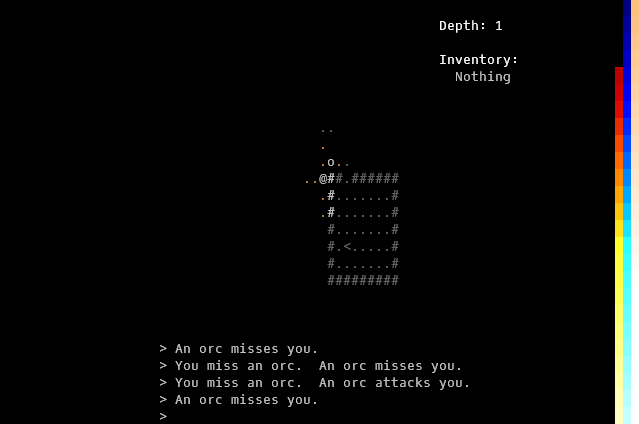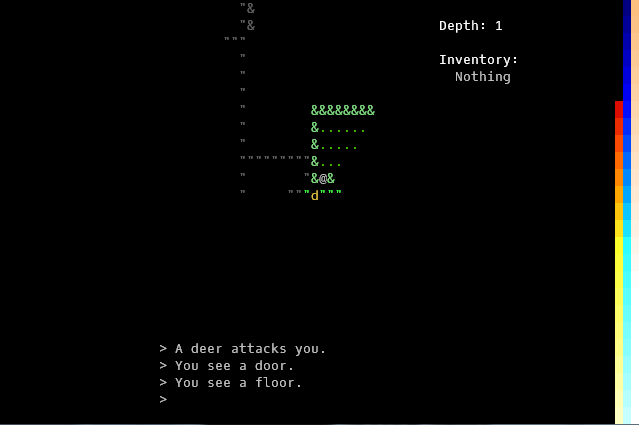
Seven Day Band


|
Seven Day Band |

|

Seven Day Band is a Seven Day Roguelike written by Jeff Lait.
You can get the most recent version here.
This provides a Windows executable versions and a 64bit Linux executable version along with the source for those brave enough to try and build it from scratch.
The hardest part about making a roguelike is data entry
So I have left that job to you, the player!
As you play Seven Day Band, you will be prompted to fill in the particulars of the world. You can also edit the world on the fly, allowing you to brand the world with your own personality.
The more times you die, the more options become unlocked. This is to avoid becoming overloaded with the number of decisions necessary. Admittedly, you probably will still end up cursing the number of menus, but I hope I have found a balance between full customizability and something that will usually create a playable game regardless of your choices.


Until you start to customize things!
Seven Day Band was a finalist in the 2015 IndieCade Festival of Independent
Games!

A 7DRL is supposed to be completely done at the end of the seven days. However, this should not mean one does not make small fixes.
December 31st, 2021
The LibTCOD 1.15 release can be found here. This upgrades to a more recent libtcod/sdl so it hopefully runs in Windows 10. (Yes I know the irony of acquiring Win10 compatibility as Win11 shows up...)
October 2nd, 2015
The IndieCade release can be found here. It adds the world chooser so you can create multiple worlds without manual file management.
March 15th, 2015
The original 7DRL version can be found here.
Licensing the Simple DirectMedia Layer library The Simple DirectMedia Layer library is currently available under the GNU Lesser General Public License (LGPL) version 2 or newer. This license allows you to link with the library in such a way that users can modify the library and have your application use the new version. The GNU LGPL license can be found online at: http://www.gnu.org/copyleft/lgpl.html To comply with this license, you must give prominent notice that you use the Simple DirectMedia Layer library, and that it is included under the terms of the LGPL license. You must include a copy of the LGPL license. You must also do one of the following: 1. Include the source code for the version of SDL that you link with, as well as the full source or object code to your application so that the user can relink your application, or 2. Include a written offer, valid for at least three years, to provide the materials listed in option 1, charging no more than the cost of providing this distribution, or 3. Make the materials listed in option 1 available from the same place that your application is available. The most common way to comply with the license is to dynamically link with SDL, and then include the SDL source code and appropriate notices with your application. Embedded Use: Personally, I don't have a problem with anybody statically linking SDL for use with embedded environments that don't already have an open development environment. (i.e. the users can't relink programs anyway) However, this does technically violate the LGPL, so be cautioned.